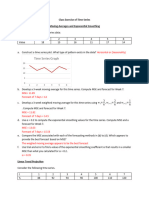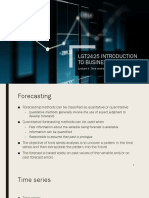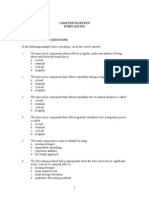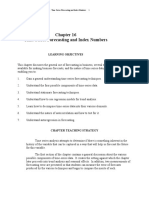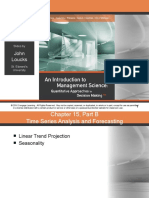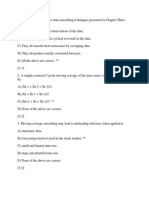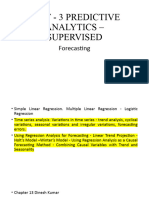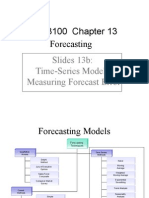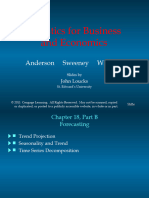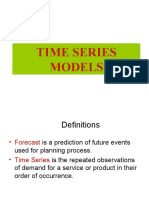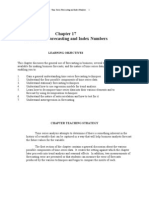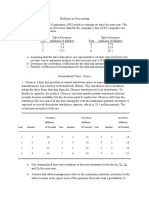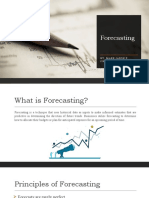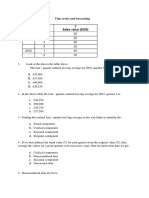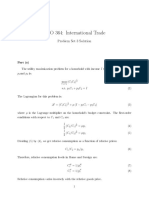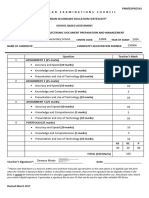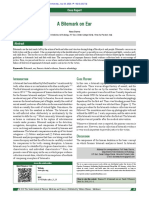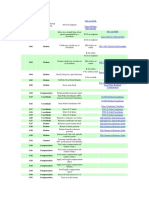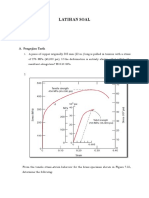0% found this document useful (0 votes)
54 views4 pagesAnswer Keys - Excercise Questions-Ch10
This document contains summaries of several time series forecasting techniques discussed in a lecture, including:
1) Weighted moving averages were used to forecast a time series, with the unweighted moving average found to have a smaller mean squared error than weighted averages.
2) Exponential smoothing and simple moving averages were compared to forecast a time series, with 3-month moving averages initially found better but exponential smoothing superior when the first observation was excluded.
3) Linear regression was used to model and forecast a downward trending time series, finding the regression equation and forecasts.
4) Seasonal time series were modeled using regression with dummy variables to capture quarterly patterns and trends over time. Forecasts were generated
Uploaded by
Han ZhongCopyright
© © All Rights Reserved
We take content rights seriously. If you suspect this is your content, claim it here.
Available Formats
Download as DOCX, PDF, TXT or read online on Scribd
0% found this document useful (0 votes)
54 views4 pagesAnswer Keys - Excercise Questions-Ch10
This document contains summaries of several time series forecasting techniques discussed in a lecture, including:
1) Weighted moving averages were used to forecast a time series, with the unweighted moving average found to have a smaller mean squared error than weighted averages.
2) Exponential smoothing and simple moving averages were compared to forecast a time series, with 3-month moving averages initially found better but exponential smoothing superior when the first observation was excluded.
3) Linear regression was used to model and forecast a downward trending time series, finding the regression equation and forecasts.
4) Seasonal time series were modeled using regression with dummy variables to capture quarterly patterns and trends over time. Forecasts were generated
Uploaded by
Han ZhongCopyright
© © All Rights Reserved
We take content rights seriously. If you suspect this is your content, claim it here.
Available Formats
Download as DOCX, PDF, TXT or read online on Scribd
/ 4
